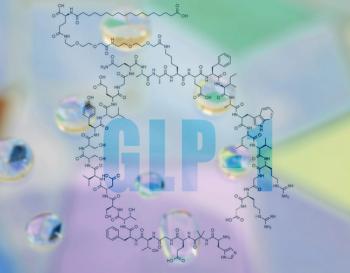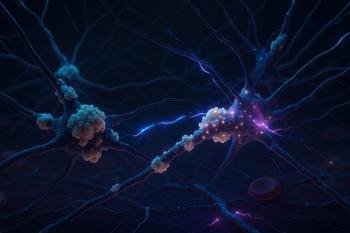TRANSLATING RESEARCH INTO PRACTICE
Rajesh R. Tampi, MD, MS, DFAPA, DFAAGP, Column Editor
A monthly column dedicated to reviewing the literature and sharing clinical implications.
Delirium is a common neuropsychiatric condition in patients with critical illness that is characterized by acute cognitive and attentional disturbances. It is associated with poor outcomes, including prolonged hospitalization, increased mortality, and long-term cognitive impairment. Management primarily focuses on identifying and addressing underlying causes. Antipsychotics are frequently used to manage the agitation and psychosis seen in patients with delirium. However, antipsychotic use is not without its risks. One of the more concerning adverse effects is cardiac arrhythmia including QTc prolongation. This secondary analysis of a randomized controlled trial assesses the cardiac safety of using antipsychotics in patients with critical illness.
The Study
Stollings JL, Boncyk CS, Birdrow CI, et al. Antipsychotics and the QTc interval during delirium in the intensive care unit: a secondary analysis of a randomized clinical trial. JAMA Netw Open. 2024;7(1):e2352034.
Study Funding
This study was funded by the National Institutes of Health grants and the Veterans Affairs Geriatric Research Education and Clinic Center.
Study Objectives
To evaluate whether the administration of intravenous (IV) haloperidol and ziprasidone is associated with QTc interval prolongation in patients with critical illness and delirium.
Methodology
This study was a secondary analysis of a randomized, double-blind, placebo-controlled, phase 3 intention-to-treat trial (MIND-USA) conducted at 16 medical centers in the United States. The patient population included intensive care unit (ICU) patients aged 18 years or older with a diagnosis of delirium, confirmed using the Confusion Assessment Method for the ICU. Participants were random 1:1:1 to receive placebo, IV haloperidol, or IV ziprasidone. Doses were administered every 12 hours and either doubled or halved based on the presence or absence of delirium.
Study Strengths
1. This study is a large, multicenter, randomized, double-blind, placebo-controlled trial.
2. The study investigated antipsychotic use at a higher QTc threshold (550 ms) than is often used in clinical practice.
3. Frequent QTc monitoring (at least twice daily) and prolonged QTc measurements with bedside telemetry were performed, which were validated with 12-lead ECG.
4. The study population involved patients in the ICU with acute and severe comorbid illness.
5. A high maximum dosing range (up to 20 mg/day of haloperidol and 40 mg/day of ziprasidone) was used.
Study Weaknesses
1. There is no record of concomitant medications, electrolyte abnormalities, or arrhythmias (ie, atrial fibrillation, bundle branch block).
2. IV ziprasidone was used to maintain blinding. This route is rarely used in clinical practice.
3. There was no standardization of ECG equipment across sites.
4. The Bazett formula was used, which overestimates QTc at high heart rates and underestimates QTc at low heart rates.
5. The study used a wide range of antipsychotic dosing (minimum of 1.25 mg and 2.5 mg twice daily of haloperidol and ziprasidone, respectively), and prior evidence suggests there could be a dose-dependent effect of antipsychotics on QTc prolongation.
For this secondary analysis of the MIND-USA trial, the primary outcome was the median change in QTc interval between days 1 and 2. Secondary outcomes included effect of treatment group on post randomization day 2 maximum predose QTc interval, correlation between bedside telemetry and electrocardiogram (ECG) measurements, incidence of ventricular arrhythmias, and association of sex and QTc interval on day 2 of treatment. The authors also looked at daily predose and postdose QTc intervals, as well as patient factors that may impact the initial postdose QTc interval.
Study Results
A total of 566 patients were included in the study, with 192 randomly assigned to IV haloperidol, 190 randomly assigned to IV ziprasidone, and 184 randomly assigned to placebo. Baseline demographic characteristics were similar across groups. The median age was 60.1 years (IQR, 51.4-68.7), and 323 of the participants were men (57%). Prerandomization QTc intervals were similar in the 3 treatment groups: haloperidol, 458.0 ms (IQR, 432.0-479.0); ziprasidone, 451.0 ms (IQR, 424.0-472.0); and placebo, 452.0 ms (IQR, 432.0-472.0). Across all groups, 8% of the patients had the drug held because of QTc prolongation, with this event occurring more commonly in the groups receiving an antipsychotic (placebo, 5%; haloperidol, 7%; and ziprasidone, 11%).
The median QTc interval changes from day 1 to day 2 were as follows: haloperidol, −1.0 ms (IQR, −28.0 to 15.0); ziprasidone, 0 ms (IQR, −23.0 to 20.0); and placebo, −3.5 ms (IQR, −24.8 to 17.0).
The median exposure days to the study drug across groups was 4.0 (IQR, 3.0-7.0), with similar delirium duration across groups: haloperidol, 4.0 days (IQR, 2.0-7.0); ziprasidone, 4.0 days (IQR, 2.0-6.0); and placebo, 4.0 days (IQR, 2.0-8.0). After controlling for baseline covariates, neither haloperidol (OR, 0.95; 95% CI, 0.66-1.37; P = .78) nor ziprasidone (OR, 1.09; 95% CI, 0.75-1.57; P = .78) had a significant difference in maximum predose QTc interval on study day 2 when compared with placebo.
Among the subset of patients who had a predose and postdose QTc measured, there was no significant difference in initial postdose QTc interval between the 3 groups and no change in QTc interval for haloperidol (OR, 1.26; 95% CI, 0.74-2.15; P = .58) or ziprasidone (OR, 1.30; 95% CI, 0.76-2.23; P = .58) when compared with placebo.
The effect of treatment on day 2 maximum QTc interval was not modified by sex (P = .41 for interaction). The median of the mean predose QTc interval for all days during the intervention period was 444.0 ms (IQR, 420.5-470.0) in the haloperidol group, 445.0 ms (IQR, 419.5-465.0) in the ziprasidone group, and 442.5 ms (IQR, 421.4-469.4) in the placebo group.
There was a moderate correlation (Spearman correlation coefficient of 0.53; P < .001) between paired measurements of bedside telemetry and ECG QTc interval values. When they differed, telemetry-measured QTc was more often longer, especially with QTc intervals greater than 550 ms.
Torsade de pointes occurred twice during the study, both times in the haloperidol group. Neither event occurred within 4 days of haloperidol receipt, so they were deemed unrelated to the study drug. Ventricular tachycardia occurred 5 times on the same day as study drug receipt (2 haloperidol recipients, 3 ziprasidone recipients) and in 1 patient (haloperidol recipient) 1 day after study drug receipt. Ventricular tachycardia and ventricular fibrillation occurred 1 day after study drug receipt (1 ziprasidone recipient), and ventricular fibrillation occurred 2 days after study drug receipt (1 ziprasidone recipient). However, the study drug was not discontinued due to any of these events because the clinical team did not determine these events to be associated with study drug administration.
Conclusions
Acute agitation and psychosis can occur in delirium, leading to pharmacologic intervention, including antipsychotic use. This study suggests the use of IV haloperidol and ziprasidone in patients with severe medical illness and QTc intervals up to 550 ms may be safe and well tolerated.
Practical Applications
When managing neuropsychiatric disturbances of delirium pharmacologically, clinicians may use IV antipsychotics. This study provides evidence that IV haloperidol or ziprasidone can be safely administered to hospitalized patients with QTc intervals up to 550 ms with a low baseline risk of QTc prolongation.
Bottom Line
This secondary analysis of a randomized, double-blind, placebo-controlled clinical trial found no evidence that haloperidol or ziprasidone caused clinically relevant QTc interval changes or ventricular arrhythmias in patients with critical illness and delirium, and relatively low baseline risk for QTc prolongation.
Dr Robak is a third-year psychiatry resident at Creighton University in Omaha, Nebraska. Dr Modi is a first-year psychiatry resident at Creighton University.
Dr Schuster is a fourth-year psychiatry resident at Creighton University. Dr Mullen is an assistant professor of psychiatry at Saint Louis University School of Medicine in Missouri. Dr Tampi is professor and chair of the Department of Psychiatry at Creighton University School of Medicine and Catholic Health Initiatives Health Behavioral Health Services. He is also an adjunct professor of psychiatry at Yale School of Medicine in New Haven, Connecticut, and a member of the Psychiatric Times editorial board.
Reference
Stollings JL, Boncyk CS, Birdrow CI, et al. Antipsychotics and the QTc interval during delirium in the intensive care unit: a secondary analysis of a randomized clinical trial. JAMA Netw Open. 2024;7(1):e2352034.















